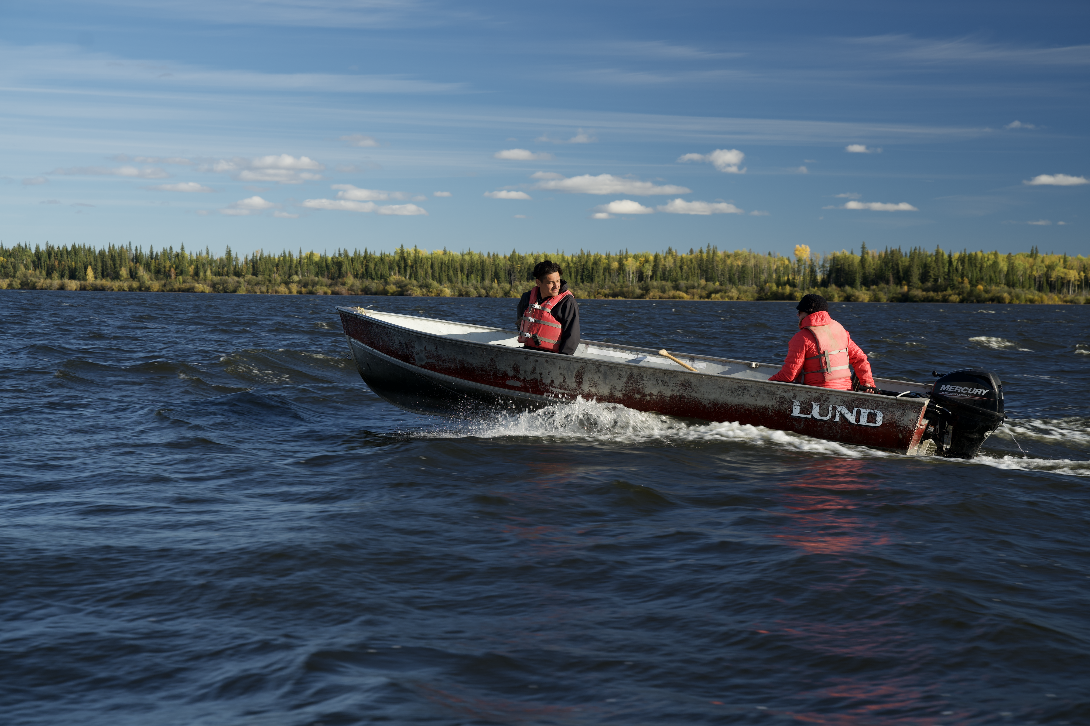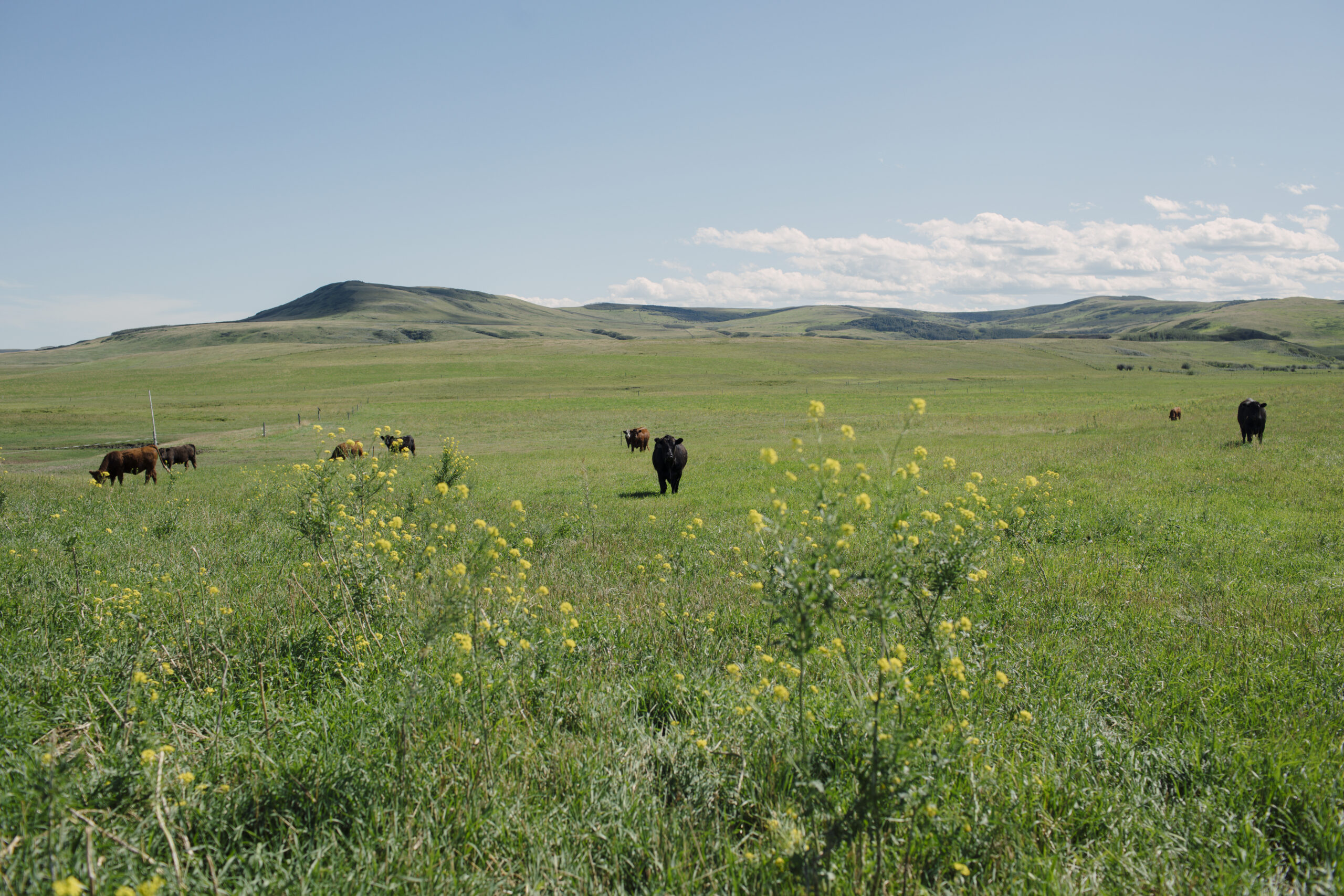
86 per cent of a river gone: First Nation calls on BC Hydro to let more water through
Katzie First Nation wants BC Hydro to let more water into the Fraser region's Alouette...
As world leaders head to COP26 in Glasgow in search of ways to fight the climate crisis, Canadians may be surprised to learn that solutions are lying right under their feet.
Canada is home to 25 per cent of the Earth’s wetlands and boreal forests, not to mention endangered prairie grasslands and the world’s longest coastline. These ecosystems can store immense amounts of carbon, a power that makes them crucial in the fight against the climate crisis.
While Canada is blessed with an abundance of carbon stores, many of them lack protections from industrial development. But efforts are underway to turn things around. Here are four stories from The Narwhal’s Carbon Cache series on nature-based climate solutions that dive deep to spotlight the people trying to protect Canada’s natural landscapes.
Mbehcho (Bistcho) Lake in northern Alberta is one of the largest lakes in the province. Spanning 426 square kilometres, the region is home to threatened caribou, sandhill cranes and wolverines, to name just some of the wildlife the lake supports. Not only that, but the surrounding wetlands hold five times as much carbon per square metre as the Amazon rainforest.
Enter an innovative proposal by the Dene Tha’ First Nation to create the first Indigenous Protected and Conserved Area in Alberta. The Dene Tha’ have a long history of stewardship in the area, with archaeological studies showing thousands of years of history. Now, they are coming up with a plan that would protect the community from the impacts of oil and gas development and help the nation manage the land.
“Maintaining the carbon-storing wetlands within the region will be critical to combating climate change,” the Dene Tha’ proposal read.

In B.C., there is a little-known forest that provides an important example of how to log while minimizing impacts to ecosystems.
The 33,000-hectare Cheakamus forest, located about a 40-minute drive south from Whistler, B.C., is teeming with life, supporting everything from bears, marmoset and cougars to lichens, moss and wildflowers.
But the forest isn’t immune to the threats of industrial activities such as logging. That’s why, in 2007, the Sḵwx̱wú7mesh Úxwumixw (Squamish Nation), the Lil̓wat7úl (Líl̓wat Nation) and Whistler formed the Cheakamus Community Forest Society to run the forest. Now, they’re charting new territory for sustainable timber harvest that outlaws clearcuts, respects Indigenous governance and combats the climate emergency.
This past summer brought a brutal drought to many parts of Canada. Perhaps no area was more affected than the Prairies, and no profession more so than farmers. So when the federal government announced a $25-million investment to conserve and restore wetlands and grasslands in the Prairie provinces, farmers rejoiced.
Draining wetlands not only destroys ecosystems but also impacts the ability to grow crops as the dirt is often damp and saline.

“You plant it, you keep planting it, you put the same amount of fertilizer on it every year … and it doesn’t do well at all,” said organic grain farmer Karen Klassen. Providing funds for restoration “might actually tip the balances to incentivize people to turn it into wetland,” she said.
Another perk? Wetlands influence local microclimates, which means keeping them healthy could soften the severity of droughts.
The $25 million in support is one piece of a federal effort to boost the adoption of climate-friendly farming practices like cover cropping, nitrogen management and rotational grazing.
Canada has the opportunity to offset 11 per cent — or 78 megatonnes — of its greenhouse gas emissions annually through natural climate solutions, according to a recent report published in Science Advances.
How big is that number? It’s the same amount of emissions produced from powering all homes in Canada for three years, or the 2018 emissions from all heavy industries in the country.
The single largest way of stemming greenhouse gas emissions is through protecting Canada’s grasslands.
According to the report, preventing the conversion of 2.5 million hectares of native grasslands and grazing lands across Alberta, Saskatchewan and Manitoba could mitigate 12.7 megatonnes of carbon pollution annually by 2030.
As the world looks for ways to address the climate crisis, protecting grasslands could be one of the most promising avenues for change. Thankfully, there are plenty of people who are working to save them.
Get the inside scoop on The Narwhal’s environment and climate reporting by signing up for our free newsletter. On a warm September evening nearly 15...
Continue reading
Katzie First Nation wants BC Hydro to let more water into the Fraser region's Alouette...

Premier David Eby says new legislation won’t degrade environmental protections or Indigenous Rights. Critics warn...

Between a fresh take on engagement and our new life on video, our team is...
